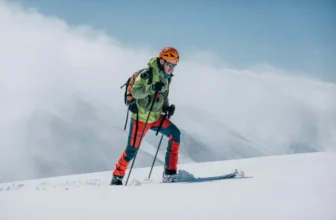
Whether you are going for a day hike or a multi-day hike, planning it with the utmost perfection is necessary to keep yourself safe from any unfortunate incident.
Once you visit the backcountry, you might get lost, face extreme weather conditions, or get stuck in any threatening situation.
Hence, you have to be careful enough to put everything in place before you hit the road.
At times, you will have your friends to help you in these situations but why take any risk when you have the chance to make things right? For that, you need to understand some basic things and create a checklist of things that you would require on the hike.
So, to help you on this journey, I have created this ultimate hiking/trekking guide which will help you in achieving all the things correctly.
Hiking guide for a safe hiking adventure
Examine your strength
In my hiking guide, this is the one other point before you select a trail, make sure that you are aware of the difficulties that occur on that trail. You can always find such information on the internet, where you will know if the particular hike is simple, intermediate or complicated.
If you select the proper hike as per your experience, it will be easy for you to complete it. Once you feel comfortable with small yet challenging trails, you can try intermediate and difficult hikes. If you choose the right level, you will complete the hike easily else you will feel exhausted and tired.
Hence, examine your hiking level and choose the trail accordingly.
Plan well
You never know what difficulties you might have to face on the hike. However, you can take the necessary steps to overcome those difficulties by planning your hike well in advance.
Therefore, think of the right route, keep information about alternate routes in case of any issues, check the weather forecast, and gather emergency contacts. Planning these things will inform you of the steps you need to take when encountering any problematic situation.
Tell others about your hike
Whenever you are done with your hiking plan, share it with your family members, roommates, or close friends. Tell them where you will go, what time it will take you to return home, and who will join you on the hike.
Also, share the contacts of your hiking mates so that your family members or friends can contact them in case you are unreachable.
Moreover, they will be aware of your plans and can check whether you are safe or need any help in emergency situations.
Don’t hike alone
If you are new to the hike, always ask your friends or family members to accompany you on the hike until you gain enough knowledge about tackling hard rocks or crossing narrow patches.
Many experienced trekkers hike alone because they know how to handle difficult situations or find alternatives in such cases. But you shouldn’t take this risk in the initial stages as you are still on the learning path.
Follow basic hiking manners
Following essential hiking, manners are just like following good habits in your daily life. It means you do things that are good for others and yourself.
So whenever you go for a hike, you shouldn’t put on great music in the wilderness. This could disturb the natural habitat and other hikers who are trying to find peace in natural beauty. Instead, you can carry your headphones and enjoy the music without worrying about others.
Moreover, you should carry a trash can to store the litter instead of throwing away the wrappers, fruit peels, or any other trash in the open.
If you enjoy that place’s beauty, make sure you maintain it and keep it clean as it was.
Other than that, when you come across another hiker on a slender crossing path, the one ascending should be allowed to proceed, and the descending one should continue with his trail.
These are some basic but important hiking manners you need to remember on every hike.
Hiking tools
Carrying hiking navigation tools in a backcountry helps you to locate yourself, find the right routes, and track them appropriately.
If you carry these tools, you won’t be at risk of getting lost in the wilderness. These tools can include a compass, map, route tracking app, or a hiking GPS watch https://holidaynomad.com/travel-gear/best-gps-watch-for-hiking/.
Most experienced hikers prefer the GPS watch because it is convenient and shows useful information such as weather conditions, height above sea level, heartbeat rate, and many more things.
Things to pack during a hike
Once you are done with everything, start creating a hiking packing list. This list will help you to track all the hiking essentials and arrange them before you hit the trail.
Food and water
Never forget to carry enough water on your hike. You should always be hydrated to be active throughout the hike. For that, you can carry reusable water bottles which can be filled up at natural water sources. You can carry water filtering tablets if you feel uncomfortable drinking unfiltered water in the wild.
You should carry nutritional bars that provide carbohydrates and proteins when it comes to food. You can carry various other snacks, fruits, and homemade food to feed your hunger.
If you are planning for a multi-day hike, then consider carrying enough hiking food without depending on natural resources.
Emergency kit
Always carry an emergency kit that contains a first-aid kit, Swiss knife, emergency whistle, fire-making tools, and duct tape. The first-aid kit should have strain reliever sprays, tablets, band-aids, and creams to treat minor ailments.
Jacket or Raincoat
Remember to add extra hiking layers to the bag to protect yourself from severe weather conditions. These layers should include jackets, raincoats, or an extra pair of t-shirts in case your clothes get wet or dirty in the tough weather.
Conclusion:
Whenever you plan for the hike, make sure to remember all the things mentioned in this article. They are helpful from the hiking perspective and make you aware of the right things that are good for your health and safety.
Guide for a safe Adventure hike
When planning an adventurous hike, it is important to be prepared to ensure a safe and enjoyable experience. Here are some tips to help you plan and prepare for your adventure hike:
1. Choose the right trail: Select a trail that is appropriate for your level of fitness and experience. If you are unsure about the difficulty of a trail, ask a ranger or another experienced hiker for advice.
2. Tell someone your plans: Before starting your hike, let someone know your planned route and expected return time. This will help them locate you in case of an emergency.
3. Stay on the trail: It is essential to stay on track to avoid getting lost or injuring yourself. If you need to leave the trail for any reason, let someone know where you are going.
4. Be prepared for the weather: Check the forecast before your hike and be prepared for changes in the temperature. Dress in layers and pack extra clothing and supplies if you get stranded on the trail.
5. Bring plenty of food and water: Be sure to pack enough food and water for your entire hike. It is also a good idea to bring along some snacks in case you get hungry on the trail.
6. Pack a first-aid kit: A first-aid kit is essential for any hike, especially an adventurous one. Be sure to include bandages, antiseptic, and pain relievers.
Choose the Best Product for an Adventure hike
Read Also:
Physical and Mental Health Benefits Of Hiking
The Ultimate Guide to Choosing Hiking Flashlights






